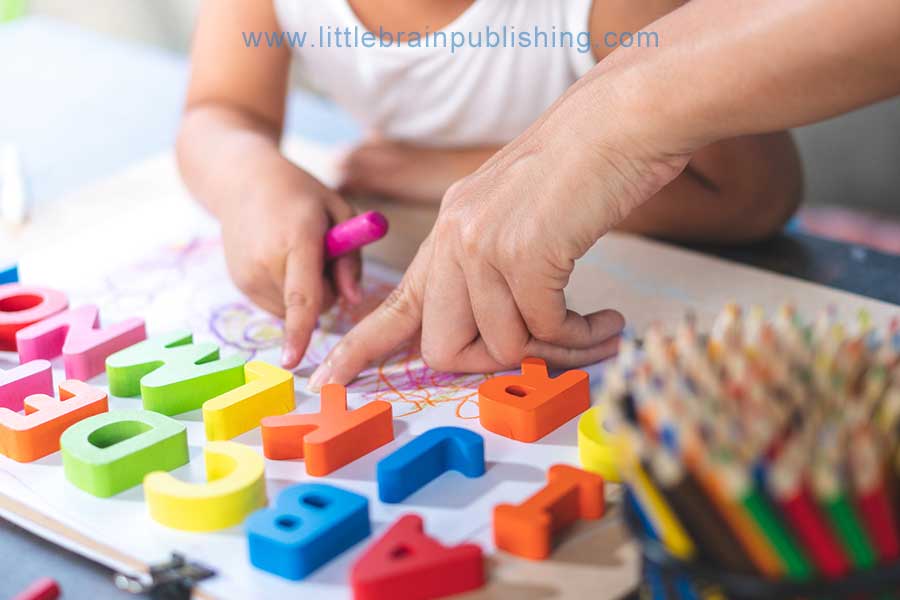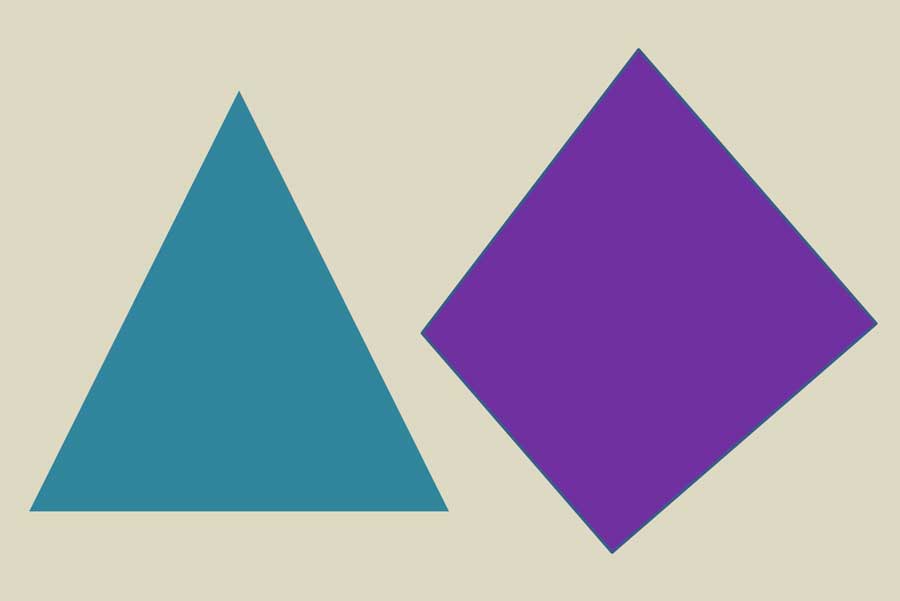Toddlers are constantly exploring and using their senses, so it’s no surprise that they notice and try to imitate many shapes and colors. Toddlers are naturally curious and love to experiment. They’re always learning, and they do it by interacting with the world around them.
One of the most common questions parents of toddlers have is when do toddlers learn shapes and colors. The answer is that it varies from child to child, but you can follow some general guidelines.
For example, studies have shown that typically developing babies can recognize basic shapes by the time they reach age one. Other studies show that an infant’s ability to discriminate between different colors develops as early as three months of age.
But in this article, we will have a detailed view on this and also answer few pertinent queries that prop in every parent’s mind like –
– “What is the best time to teach colors and shapes?”
– “How does a toddler learn shapes?”
– “When do toddlers learn colors?”
– “Why are shapes important to learn?”
– “What should a preschooler know?”
We are covering all those things in a detailed manner in this article! So, let’s jump right in.
When Do Toddlers Learn Shapes?
Toddlers will know about 20-30 basic shapes at the age of 2 years old. They will only recognize some colors, but they understand that different shapes have different appearances and feel. These are the early stages of understanding geometry for toddlers.
- The ideal time to teach shapes to a toddler is around 2 years of age.
- Always start with the basic shapes like square, rectangle, circle, triangle, and then teach them moderate shapes like oval, heart, diamond, and moon.
- The majority of shapes can be taught by the age of 3 but don’t get upset if they struggle. Try changing your teaching technique.

While teaching shapes, you can try the following activities :
- 1. You can identify the shape by giving it a name, like: “What shape is this?” or “Which shape is this?”
- 2. You can provide the name of the shape, but you may miss out on the visual representation of that shape, like: “This is a square” or “This is an oval.”
- 3. You can give shapes in a different form like: “a square was cut into three parts” or “a rectangle was folded in half.”
- 4. Sorting games are games that require the child to move objects to be sorted into different containers while they have not been labeled.
- 5. Drawing shapes may involve sketching shapes on paper or drawing using tools like crayons, paint, or markers.
- 6. Shape Walk is a game where the player finds clues about the shape they’re supposed to find and follows a path until they reach it.
When Do Toddlers Learn Colors?
Our world is a visually rich environment filled with unique textures, shapes, patterns, and colors. It can be overwhelming for the kid’s eye to take in all of the stimuli at once, and it becomes difficult to assess an object’s properties without first focusing on it. This is why color identification is an essential visual skill that we rely on day to day, especially as children.
It is a fact that toddlers can identify bananas. They just need a little help. Teach them about colors, and the world of an endless variety of colors will open up to them. Just point out an object to your toddler and ask him to identify its color. He will point out the color and try to name it.
Toddlers are born with a natural preference for black and white, but they start to differentiate between other colors, too, such as reds and greens as they grow older.
The color may be an easy one, like yellow, orange, or red. If your child can identify a color, you can move to the next color and so on. Always associate a color with a symbol, shape, or image.
For example – Red is the color of an apple; yellow is the sun, and so on. The process may be easier if you use the names of all colors instead of just three or four colors only. Trial and error should be followed until your toddler can identify all colors.
Research has shown that toddlers usually learn to recognize colors from around 2 years old, and their recognition improves with time.
The best age to teach toddlers about colors is 18 months or a little earlier (depending on a kid’s interest/curiosity). Some kids may learn earlier, and few might face difficulty, and kids with color blindness may need special attention. The world is full of colors, so teaching colors shouldn’t be difficult. Just point at an object and ask the kid to identify the color.

There are three different things that you need to teach colors:
- Matching – The first matching activity is to provide the child with a color book (as long as it has colored images on one side and a blank figure on the other) and some crayons.
- Sorting – The second activity is sorting, which can be done via several methods, including toys, blocks, fruit baskets, etc.
- Revising – It typically entails pointing at something and asking what color it is, for instance, when looking at chocolate wrappers or teaching them colors by providing rewards when they answer correctly.For example: “What is this red ball?” or “Can you point to what color that is” And for an extra treat, ask your child to name different colors of chocolates (wrappers) they’ve eaten! Revising is the most important one of all as it helps in understanding different color combinations. When a child is revising, a chart with a number of colors is also needed.
* Reward them to make the learning fun! *
Why Are Shapes Important To Learn?
Look for shapes in everything you see. They tell a lot about what things are. Shapes can help us build up our skills of seeing and identifying objects.
An excellent place to start is by talking about shapes. Tell your child that you saw a rectangle shape in the clouds or that you saw two different triangles in the trees. Once they see how vital shapes are, they will not help but start seeing them everywhere.

Why are Shapes important?
- Shapes are essential to learning because they help a child identify and design/organize visual information.
- It also promotes better signal and symbol recognition.
- Shapes also help a kid to memorize and deal with numbers and figures.
- It enhances observational skills while you differentiate things.
- It makes a child more efficient in sorting and problem-solving.
- Shape recognition is vital for of cognitive development of toddlers’ because it helps them learn the simple concept that objects exist as different shapes and have different properties.
- Children should also learn about patterns because this helps them build connections between what they know and what they see in an unfamiliar environment.
- A child needs to be exposed to shapes in order to develop good decision-making skills.
Eventually, a child can perfectly identify objects as shapes. A toddler can make the association of shapes from the pictures or the objects outside because they have an interest in them.
What Shapes Do Preschoolers Need To Know?
Preschoolers can recognize basic shapes such as rectangles and squares and differences between 2-Dimensional shapes such as rectangles and cubes. They can identify discrepancies in 3-Dimensional shapes, but they might not know the basis of discrimination or properties.
Assuming kids respond to repeated shapes, the question can be phrased: Are these two shapes in the picture below the same?
One shape is a three-sided polygon, and another with four. The kid might say, “YES.” Because both images have pointed tops which makes them think both are the same. They might recognize one has three sides, and another has four. But still, their perceptual difference will make their decision change. Such tests are magnificent to know/uncover what perception/thinking they persist.

Besides recognizing the differences and their sameness, a child must know prototypes of shapes.
For example, shapes such as equilateral triangles, isosceles triangles, and right-angled triangles are all triangle shapes but look different.
Such prototypes need to be taught to the child while they at the same time need to learn four side shapes with equal lengths and right angles are squares. Not all four side shapes with equal lengths will be squares because there are figures which are non-congruent.
Another aspect of shapes is composing and decomposing. Pre-schoolers can combine two squares to make a rectangle or two triangles to make a rhombus. They can also break shapes into two; this fosters an understanding of shape composition and decomposition.
Overall, a pre-schooler should know basic shapes, few polygons and should be able to differentiate between dimensions. The significant aspects which need to be developed are as follows:
- Perception/Perspective:
- Differentiate between two shapes that look similar but are different
- An object on the left side would be suitable if both face each other (parallel).
- Polymorph shapes: Basic knowledge of properties of shapes and their prototypes.
- Number of sides
- Symmetry
- Composition and Decomposition of shapes
Conclusion
Now we know how a child’s brain development starts at an early age and that this is a crucial time because the synapses are pruning out. Learning new things during this time will result in acquiring new skills rapidly.
Nature determines what the default personality or character is for each child, but nurture profoundly affects developing those traits. It is essential to create a safe and sound environment for learning and provide hands-on activities like pre-kindergarten activities and sensory activities with a balanced diet that trains them for other cognitive skills at an early age.
